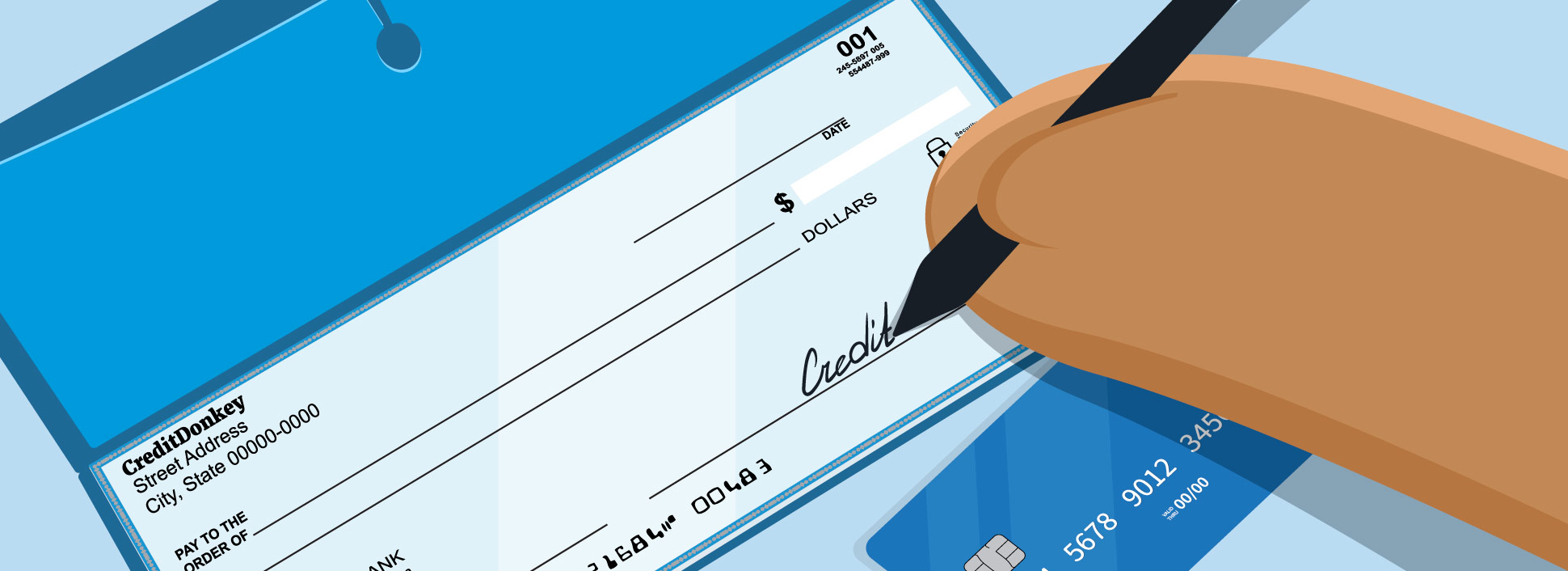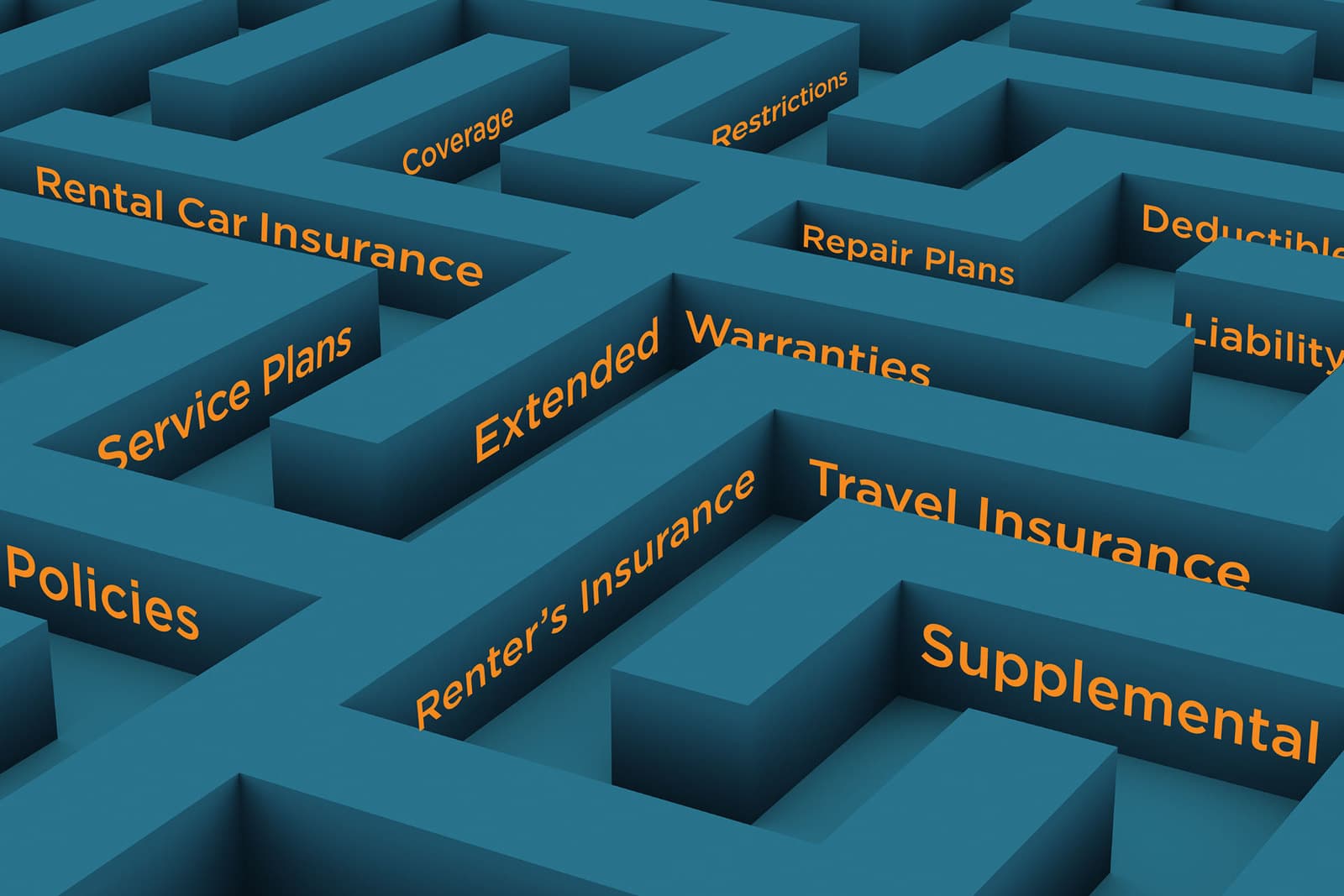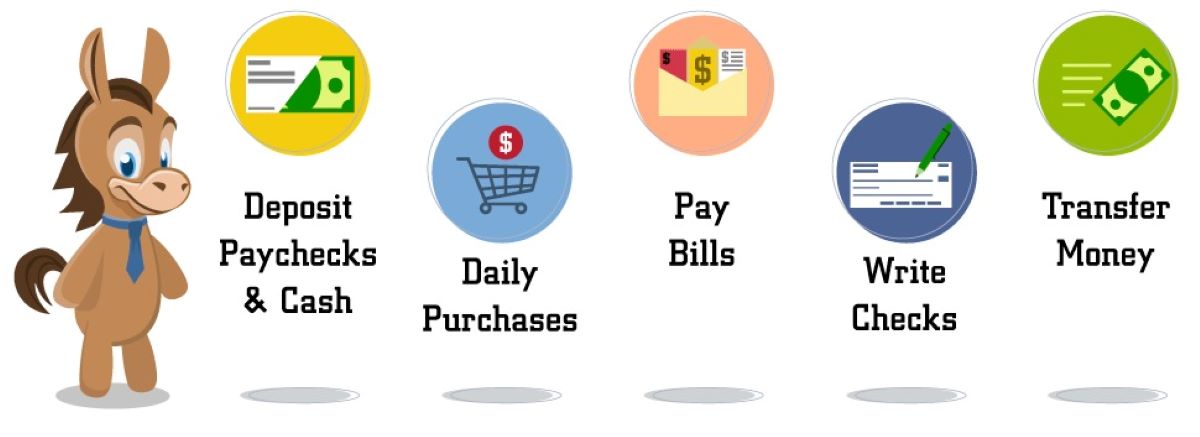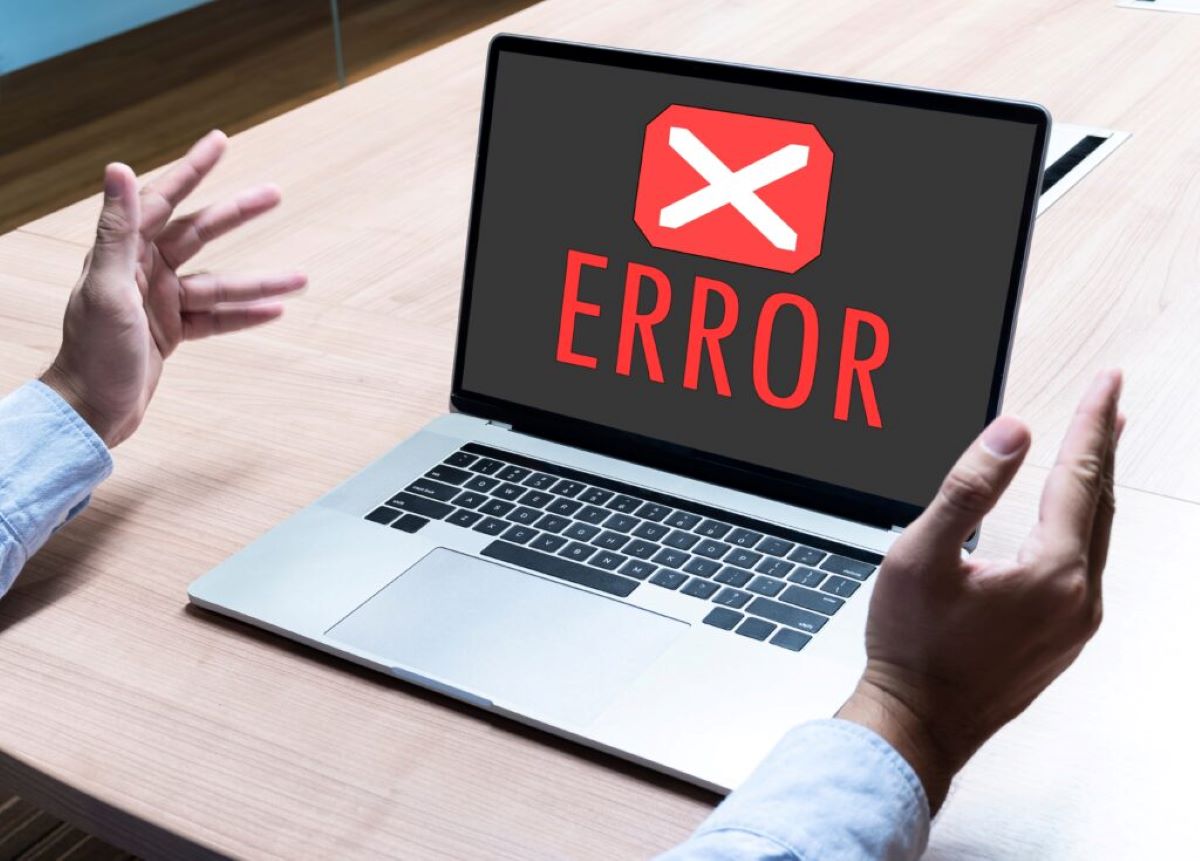Home>Finance>What To Check When Extending Credit To A Client


Finance
What To Check When Extending Credit To A Client
Modified: March 1, 2024
Ensure a smooth credit extension process by checking essential factors when dealing with clients in the finance industry. Protect your business and make informed decisions.
(Many of the links in this article redirect to a specific reviewed product. Your purchase of these products through affiliate links helps to generate commission for LiveWell, at no extra cost. Learn more)
Table of Contents
- Introduction
- Assessing the Client’s Creditworthiness
- Reviewing the Client’s Financial History
- Analyzing the Client’s Payment History
- Evaluating the Client’s Current Financial Situation
- Verifying the Client’s Business Stability
- Assessing the Client’s Industry and Market Conditions
- Examining the Client’s Collateral and Security
- Reviewing the Client’s Legal and Regulatory Compliance
- Evaluating the Client’s Credit References
- Determining Credit Terms and Conditions
- Implementing Monitoring and Collection Procedures
- Conclusion
Introduction
Extending credit to clients is a common practice in the world of finance. Whether you are a financial institution offering loans or a business selling goods or services on credit terms, it is crucial to ensure that the clients you extend credit to are creditworthy and have the ability to fulfill their payment obligations.
Assessing the creditworthiness of a client involves a thorough evaluation of their financial history, payment habits, current financial situation, and overall stability. By conducting a comprehensive credit assessment, you can minimize the risk of late or non-payment and safeguard your business’s financial health.
In this article, we will explore the essential factors to consider when extending credit to a client. From reviewing their financial history to analyzing their payment habits and evaluating their business stability, we will provide you with a comprehensive guide to make informed decisions. By implementing effective credit assessment strategies, you can protect your business from potential financial losses and maintain healthy cash flow.
It is important to note that while extending credit can be beneficial for business growth, it inherently carries some level of risk. By conducting a thorough credit assessment, you can mitigate these risks and ensure that your clients have the financial means to fulfill their obligations. Our aim is to equip you with the knowledge and tools necessary to make educated decisions when extending credit to clients.
Throughout the article, we will discuss various aspects of credit assessment, including examining the client’s financial history, payment habits, business stability, industry conditions, collateral, legal compliance, credit references, and more. We will also delve into the importance of determining appropriate credit terms and conditions and implementing effective monitoring and collection procedures to ensure timely payment and minimize the risk of delinquency or default.
By the end of this article, you will have a comprehensive understanding of the key factors to consider when assessing a client’s creditworthiness. You will be equipped with the knowledge and tools necessary to make informed decisions and minimize the risk associated with extending credit. Let’s dive in and explore the crucial steps involved in evaluating a client’s creditworthiness.
Assessing the Client’s Creditworthiness
When extending credit to a client, one of the most important steps is assessing their creditworthiness. This process involves evaluating the client’s financial history, payment habits, current financial situation, business stability, industry conditions, collateral, legal compliance, and credit references. By thoroughly examining these factors, you can determine the level of risk associated with extending credit to the client.
The first aspect to consider is the client’s financial history. Review their past financial statements, including balance sheets, income statements, and cash flow statements. Look for any significant fluctuations or patterns that could indicate potential financial instability. Analyze their profitability, liquidity, and solvency ratios to gain insight into their financial health.
Next, it is essential to assess the client’s payment habits. Review their credit score, payment history with other creditors, and any past incidents of late or missed payments. These indicators can provide valuable insights into their reliability and ability to fulfill their payment obligations. Additionally, consider obtaining trade references from other businesses they have worked with to gauge their payment behavior.
Evaluating the client’s current financial situation is vital to determine their ability to take on additional credit. Calculate their debt-to-income ratio to understand their level of existing debt compared to their income. This ratio can help you assess whether the client has sufficient income to cover their existing financial commitments and any new credit you may extend to them.
Another crucial factor to consider is the client’s business stability. Evaluate the length of time they have been in business and their track record of success. A well-established and stable business is more likely to have the financial resources and expertise to honor their credit obligations. Conversely, a new or volatile business may carry a higher risk of financial instability and a greater likelihood of defaulting on payments.
Assessing the client’s industry and market conditions is also essential. Consider external factors such as economic trends, market competition, and regulatory changes that may impact the client’s business. A thorough understanding of the industry landscape can provide insights into the client’s potential for growth, profitability, and ability to handle credit obligations.
Examining the client’s collateral and security is another critical step in the creditworthiness assessment process. If the client offers collateral or security against the credit extended, evaluate its value and marketability. Collateral serves as a safeguard in the event of default, offering some level of protection to the creditor.
Reviewing the client’s legal and regulatory compliance is essential to ensure that they operate within the bounds of the law. Check for any pending legal actions, judgments, or regulatory violations that could indicate potential financial instability or legal risks. It is crucial to work with clients who prioritize legal and ethical practices.
Lastly, evaluating the client’s credit references can provide further insights into their creditworthiness. Contact their existing creditors or suppliers to verify their payment history and credit standing. Speaking directly with those who have firsthand experience in dealing with the client can provide valuable information to help assess their reliability and creditworthiness.
By thoroughly assessing these various factors, you can gain a holistic understanding of the client’s creditworthiness. This comprehensive evaluation will enable you to make informed decisions when extending credit and minimize the risk of late or non-payment. Remember, each client is unique, and it is essential to tailor your credit assessment process to their specific circumstances.
Reviewing the Client’s Financial History
When assessing a client’s creditworthiness, one of the crucial steps is reviewing their financial history. By examining their past financial statements and performance, you can gain valuable insights into their financial stability and ability to fulfill their payment obligations.
Start by requesting the client’s financial statements, including balance sheets, income statements, and cash flow statements. These documents provide a snapshot of the client’s financial position and performance over a specific period. Analyze the financial statements to understand the client’s profitability, liquidity, and solvency.
Profitability measures the client’s ability to generate income. Review their net profit margins, return on assets (ROA), and return on equity (ROE). These ratios indicate how efficiently the client utilizes their resources and generates profits. A client with consistent and healthy profitability is more likely to have the financial capacity to honor their credit obligations.
Liquidity refers to the client’s ability to meet short-term financial obligations. Assess their current ratio, which compares their current assets to their current liabilities. A higher current ratio indicates a better ability to cover short-term debts. Additionally, calculate their quick ratio or acid-test ratio, which excludes inventory from current assets. This ratio provides a more conservative measure of liquidity.
Solvency evaluates the client’s long-term financial health by assessing their ability to meet long-term obligations. Review their debt-to-equity ratio, which measures the client’s reliance on debt financing relative to their equity. A lower debt-to-equity ratio indicates a lower risk of financial distress. Furthermore, analyze their interest coverage ratio, which indicates their ability to cover interest expenses with operating income.
Look for any significant fluctuations or trends in the client’s financial statements. This can indicate potential financial instability or highlight areas of concern. For example, a sudden decline in profitability or an increasing debt burden may raise red flags about the client’s ability to manage their financial obligations.
In addition to the financial statements, it can be valuable to review the client’s financial ratios. Analyze key ratios such as the gross profit margin, operating profit margin, and asset turnover ratio. These ratios provide further insights into the client’s operational efficiency and financial performance.
Another aspect to consider is the client’s capital structure. Review their mix of debt and equity financing. A well-balanced capital structure with an appropriate level of debt indicates a healthy financial position. However, excessive reliance on debt financing may increase the risk of financial instability and inability to fulfill credit obligations.
Lastly, analyze the client’s cash flow statement to assess their ability to generate positive cash flows from operating activities. Positive cash flows ensure that the client has the necessary funds to meet their financial obligations. Pay close attention to the client’s operating cash flow and their ability to generate consistent and sufficient cash inflows.
By thoroughly reviewing the client’s financial history, you can gauge their financial stability and ability to meet their credit obligations. Understanding their profitability, liquidity, solvency, capital structure, and cash flow dynamics will provide valuable insights into their financial health. This information will enable you to make informed decisions when extending credit and minimize the risk of late or non-payment.
Analyzing the Client’s Payment History
When assessing the creditworthiness of a client, analyzing their payment history is a crucial step. Understanding how the client has managed their financial obligations in the past provides insights into their reliability and ability to make timely payments. By thoroughly analyzing their payment history, you can minimize the risk of late or non-payment and ensure a healthy cash flow for your business.
Start by obtaining the client’s credit reports from reputable credit bureaus. These reports will provide valuable information regarding the client’s creditworthiness, including their credit score and payment history with other creditors. A good credit score indicates a strong track record of responsible financial behavior.
Review the client’s payment history and look for any patterns of late payments or delinquencies. Assess the severity and frequency of late payments to determine their impact on the client’s creditworthiness. Clients with a history of consistent late payments may pose a higher risk of defaulting on their credit obligations.
Additionally, consider contacting the client’s references or trade partners to obtain firsthand information about their payment behavior. Speaking directly with those who have conducted business with the client can provide valuable insights into their reliability and credibility. Inquire about the client’s payment habits and any incidents of late or missed payments.
It is also important to consider the reasons behind any late payments. Inquire about the causes of late payments and assess whether they were due to temporary financial difficulties or a systemic issue. Evaluate how the client resolved these issues and whether they have taken steps to prevent future payment delays.
If possible, request payment references from the client’s previous creditors. These references can provide additional information about the client’s payment patterns and creditworthiness. Contacting these references directly allows you to verify the accuracy of the information provided and gain further confidence in the client’s ability to meet their payment obligations.
Another aspect to consider is the client’s credit utilization. Review their credit utilization ratio, which compares their credit card balances to their credit limits. A high credit utilization ratio indicates a higher reliance on credit and may increase the risk of financial strain or difficulty in making payments. Conversely, a lower credit utilization ratio shows a more responsible management of credit.
Lastly, consider any formal credit inquiries made by the client. Multiple credit inquiries within a short period can indicate an increased need for credit or potential financial distress. Evaluate the reasons behind these inquiries and assess their potential impact on the client’s ability to handle their credit obligations.
By thoroughly analyzing the client’s payment history, you can gain insights into their reliability and ability to make timely payments. Understanding their credit score, payment patterns, references, and credit utilization will help you make informed decisions when extending credit. This analysis will minimize the risk of late or non-payment and ensure a healthy financial relationship with your clients.
Evaluating the Client’s Current Financial Situation
When extending credit to a client, it is crucial to evaluate their current financial situation. Understanding their present financial health and stability allows you to assess their ability to fulfill their payment obligations. By thoroughly evaluating the client’s current financial situation, you can minimize the risk of late or non-payment and make informed decisions about extending credit.
Start by obtaining up-to-date financial statements from the client. Review their balance sheet, income statement, and cash flow statement to gain a comprehensive understanding of their current financial position. Analyze their current assets, current liabilities, and working capital to assess their liquidity and ability to cover short-term obligations.
Calculate the client’s debt-to-income ratio, which compares their total debt to their income. A lower debt-to-income ratio indicates a healthier financial situation, as it means the client has a lower debt burden relative to their income. This ratio helps determine if the client has sufficient income to cover their financial commitments, including any additional credit that may be extended to them.
Assess the client’s cash flow by reviewing their cash flow statement. Analyze their operating activities, investing activities, and financing activities to understand their cash inflows and outflows. Positive cash flow from operating activities indicates that the client has enough cash generated from their core business operations to meet their financial obligations.
Monitor the client’s working capital position to gauge their financial flexibility. Working capital is calculated by subtracting current liabilities from current assets. A positive working capital indicates that the client has enough short-term resources to cover their operating expenses and meet their financial obligations promptly.
Consider the client’s capital expenditure plans. Are they planning any significant investments or expansions that may impact their cash flow or ability to make timely payments? Evaluate the potential impact of these projects on the client’s financial stability and assess if they have the necessary financial resources to execute their plans successfully.
Furthermore, factor in any industry-specific or economic trends that may impact the client’s financial situation. For example, are there any changes in market conditions, regulatory requirements, or customer demand that could affect the client’s revenue generation or profitability? Staying informed about the client’s operating environment allows you to assess the potential risks and opportunities associated with extending credit.
Lastly, consider the client’s level of existing debt. Review their outstanding loans, credit card balances, and other financial obligations. Assess their ability to manage their current debt load and determine if they have sufficient capacity to take on additional credit. An excessively high level of debt may hinder the client’s ability to meet their financial obligations on time.
By thoroughly evaluating the client’s current financial situation, you can assess their financial health, stability, and capacity to fulfill their payment obligations. This analysis ensures that you make informed decisions when extending credit and reduces the risk of late or non-payment. Understanding the client’s debt-to-income ratio, cash flow, working capital, capital expenditure plans, industry trends, and existing debt level allows you to assess their ability to manage credit effectively.
Verifying the Client’s Business Stability
When extending credit to a client, it is crucial to assess the stability of their business. Understanding the client’s business stability allows you to evaluate their long-term viability and the likelihood of them fulfilling their credit obligations. By thoroughly verifying the client’s business stability, you can minimize the risk of late or non-payment and make informed decisions when extending credit.
Start by assessing the length of time the client’s business has been in operation. A well-established business with a long history indicates stability and demonstrates that they have been able to navigate the challenges of the industry over a significant period. On the other hand, a relatively new business may have a higher risk of financial instability and a greater likelihood of defaulting on payments.
Review the client’s financial statements, including their balance sheet, income statement, and cash flow statement. Analyze their profitability, liquidity, and solvency to gauge their financial health. A business that consistently generates profits and maintains a healthy liquidity position is more likely to have the financial resources to honor their credit obligations.
Examine the client’s sales history and trends. Analyze their revenue growth over the past few years to assess their ability to consistently generate sales and sustain their business operations. A steady and growing revenue stream indicates business stability, while declining or erratic sales patterns may signify potential instability.
Consider the client’s customer base. Are they dependent on a small number of customers, or do they have a diversified client portfolio? A diversified customer base indicates a healthier business model, as it reduces the risk of significant revenue loss if one customer defaults or experiences financial difficulties.
Assess the client’s industry and market conditions. Is their industry experiencing growth or facing significant challenges? Evaluate the client’s ability to withstand any industry-specific headwinds or take advantage of favorable market conditions. Understanding the broader industry landscape allows you to assess the potential risks and opportunities associated with extending credit.
Research the client’s reputation and brand image in the market. Check for any negative publicity, legal disputes, or regulatory violations that may impact their business stability. A business with a strong reputation and positive image is more likely to have a stable customer base and attract new customers. On the other hand, a tarnished reputation may hinder their ability to generate sustainable revenue.
Obtain references from the client’s suppliers, partners, or other businesses with whom they have conducted transactions. Validate the client’s business relationships and inquire about their reliability and payment behavior. Gathering feedback from these references can provide valuable insights into the client’s business stability, professionalism, and ability to fulfill their financial obligations.
Furthermore, examine the client’s business plan and growth strategy. Evaluate their long-term vision and assess if they have a clear roadmap for expanding their business. A well-defined growth plan indicates strategic thinking and a commitment to long-term success.
By thoroughly verifying the client’s business stability, you can assess their ability to fulfill credit obligations and minimize the risk of late or non-payment. Analyzing factors such as business longevity, financial statements, sales history, customer base, industry conditions, reputation, and growth strategy provides a comprehensive understanding of the client’s business stability and viability.
Assessing the Client’s Industry and Market Conditions
When extending credit to a client, it is vital to assess the industry and market conditions in which they operate. Understanding the client’s industry and market environment allows you to evaluate the potential risks and opportunities associated with extending credit. By thoroughly assessing the client’s industry and market conditions, you can minimize the risk of late or non-payment and make informed decisions when offering credit.
Start by conducting research on the client’s industry. Examine the overall industry trends, growth rates, and market demand. Are there significant changes or disruptions occurring in the industry? Understanding these dynamics helps you assess the client’s potential opportunities for growth or challenges they may face.
Consider the competitive landscape within the client’s industry. Analyze the major players, their market share, and their competitive advantages. Understanding the level of competition allows you to gauge the client’s ability to differentiate themselves and sustain their business operations.
Assess the regulatory environment that governs the client’s industry. Are there any upcoming or recent regulatory changes that may impact the client’s operations or financial stability? Stay updated on regulatory developments to assess the potential impact on the client’s ability to comply with financial obligations.
Evaluate the client’s position within the industry value chain. Are they a supplier, manufacturer, distributor, or service provider? Understanding their role in the value chain allows you to assess their level of dependence on other industry players and potential risks associated with their position.
Consider market factors such as customer demographics, purchasing power, and consumer trends. Analyze the client’s target market and assess its growth potential and stability. Understand the customers’ ability and willingness to pay for the client’s products or services. A robust and stable market enhances the client’s ability to generate consistent revenue and fulfill their credit obligations.
Conduct a SWOT analysis (Strengths, Weaknesses, Opportunities, and Threats) of the client’s industry. Identify the industry’s strengths and opportunities that can create a favorable business environment for the client. Evaluate the weaknesses and threats that may pose risks to the client’s financial stability.
Monitor industry publications, market reports, and economic indicators to stay informed about the industry’s performance. Analyze key metrics such as sales growth, profitability, and market share to gauge the industry’s overall health and assess the potential impact on the client’s business stability.
Consider any technological advancements or disruptions that may impact the client’s industry. Evaluate whether the client is adapting to technological changes and leveraging innovations to stay competitive. Technological advancements can create new opportunities for growth but can also disrupt traditional business models.
Finally, engage in discussions with industry experts, attend conferences, and participate in industry forums to gain insights and expert opinions about the client’s industry and its future prospects. Networking with industry professionals provides valuable information to assess the potential risks and opportunities associated with extending credit to the client.
By thoroughly assessing the client’s industry and market conditions, you can evaluate the potential risks and opportunities associated with extending credit. This analysis allows you to make informed decisions and minimize the risk of late or non-payment. Understanding industry trends, competitive landscape, regulatory environment, market factors, and technological advancements provides valuable insights into the client’s business stability.
Examining the Client’s Collateral and Security
When extending credit to a client, it is important to consider the collateral and security they can offer to mitigate the risk associated with the credit. Collateral acts as a safeguard, providing a form of repayment in the event of default. Examining and evaluating the client’s collateral and security is crucial to ensure the protection of your financial interests. By thoroughly examining the client’s collateral and security, you can minimize the risk of financial loss and make informed decisions when extending credit.
Start by understanding the types of collateral the client can offer. Common forms of collateral include real estate, equipment, vehicles, inventory, and accounts receivable. Assess the type and value of the collateral to determine its potential for generating funds in the event of default.
Conduct a thorough evaluation of the collateral’s market value. Obtain appraisals or engage professional assessors to determine the fair market value of the collateral. This assessment ensures that the collateral holds enough value to cover the credit amount extended.
Consider the liquidity and marketability of the collateral. Some assets, such as real estate or high-demand equipment, may be more easily converted into cash if needed. Assets that are difficult to sell or less valuable may pose a greater risk in terms of recovering the credit amount in case of default.
Evaluate the condition and maintenance of the collateral. A well-maintained asset is likely to retain its value and usability. Assess any potential risks or factors that may impact the collateral’s condition, such as technological obsolescence or industry-specific challenges.
Review the client’s ownership and title documentation of the collateral. Ensure that the client has the legal rights to use the collateral as security for the credit. Conduct thorough due diligence to avoid any disputes or legal complications regarding the ownership and encumbrance of the collateral.
Assess the priority of the collateral. Determine if there are any existing liens or encumbrances on the collateral. If there are prior claims, it may impact the client’s ability to provide clear and undisputed collateral.
Consider the client’s overall financial health and ability to maintain and protect the collateral. Assess whether the client has the resources and financial capacity to maintain and protect the collateral from damage or loss. This evaluation helps ensure that the collateral remains valuable and viable security throughout the credit period.
Evaluate any insurance coverage on the collateral. Verify if the collateral is adequately insured against potential risks, such as damage, theft, or natural disasters. Insurance coverage provides an additional layer of protection and increases the chances of recovering the credit amount if the collateral is lost or damaged.
Seek legal advice to ensure all necessary legal documentation is in place to establish the creditor’s rights in relation to the collateral. This includes drafting and executing legally binding agreements, such as security agreements or UCC filings, to protect your interests in the collateral.
By thoroughly examining the client’s collateral and security, you can assess the level of protection it offers against the credit extended. Understanding the type, value, marketability, condition, ownership, priority, and insurance coverage of the collateral allows you to make informed decisions and minimize the risk of financial loss when extending credit.
Reviewing the Client’s Legal and Regulatory Compliance
When extending credit to a client, it is crucial to review their legal and regulatory compliance. Ensuring that the client operates within the bounds of the law and adheres to relevant regulations is important for protecting your business interests and minimizing potential legal risks. By thoroughly reviewing the client’s legal and regulatory compliance, you can make informed decisions when extending credit and reduce the risk of legal complications.
Start by conducting a comprehensive review of any legal actions, judgments, or pending litigation involving the client. Assess the nature and severity of these legal matters and evaluate their potential impact on the client’s financial stability and ability to fulfill credit obligations. Legal disputes can lead to financial liabilities and disrupt business operations, jeopardizing the client’s ability to make timely payments.
Verify the client’s compliance with all applicable laws and regulations specific to their industry. Determine if the client holds the necessary licenses, permits, or certifications required to legally operate their business. Failure to comply with legal and regulatory requirements can result in penalties, fines, or even closure of the business, which may significantly impact the client’s ability to meet their credit obligations.
Review the client’s adherence to consumer protection laws and regulations. Ensure that they adhere to fair lending practices, consumer privacy laws, and other relevant regulations to protect the rights and interests of consumers. Non-compliance with these laws can lead to legal and reputational risks for the client, potentially affecting their financial stability.
Evaluate the client’s compliance with tax regulations. Verify that they fulfill their tax obligations, including timely payment of taxes, proper record-keeping, and accurate reporting. Non-compliance with tax regulations can lead to legal consequences and financial penalties, which may impact the client’s ability to meet their credit obligations.
Consider any environmental regulations that may apply to the client’s business operations. Assess if they comply with environmental laws and regulations related to waste management, pollution control, or resource conservation. Non-compliance with these regulations can result in financial liabilities, legal actions, and reputational damage.
Review the client’s privacy and data protection practices. Ensure that they have appropriate measures in place to safeguard customer information and comply with data protection laws. In an era of increasing data breaches and privacy concerns, clients who demonstrate a strong commitment to data security are less likely to face regulatory actions or legal consequences that could impact their financial stability.
Understand the client’s compliance with anti-money laundering and anti-corruption regulations. Verify that the client has implemented robust internal controls to prevent money laundering and bribery activities. Compliance with these regulations is crucial for maintaining the client’s reputation and mitigating legal and financial risks.
Consider engaging legal experts or conducting a legal risk assessment to ensure a comprehensive review of the client’s legal and regulatory compliance. Legal professionals can provide insights into potential areas of concern and help mitigate legal risks associated with extending credit to the client.
By thoroughly reviewing the client’s legal and regulatory compliance, you can assess the potential legal risks and make informed decisions when extending credit. Ensure the client adheres to relevant laws and regulations, addresses any legal actions or judgments, and demonstrates a commitment to ethics and compliance. This review minimizes the risk of legal complications and protects your business interests throughout the credit relationship.
Evaluating the Client’s Credit References
When assessing the creditworthiness of a client, evaluating their credit references is a critical step. Credit references provide valuable insights into the client’s past credit behavior and their ability to fulfill financial obligations. By thoroughly evaluating the client’s credit references, you can make informed decisions when extending credit and reduce the risk of late or non-payment.
Start by obtaining credit references from the client. Credit references are typically obtained from the client’s previous creditors or suppliers who have firsthand experience in dealing with the client’s payment behavior. Request information about the client’s payment history, credit limits, and any incidents of late or missed payments.
Contact the client’s credit references directly to verify the information provided by the client. A personal conversation allows you to gain more insight into the client’s creditworthiness. Inquire about the client’s payment habits, how they handle credit, and if they consistently meet their financial obligations.
Consider the length and nature of the client’s relationship with their credit references. Evaluate if they have established long-term and stable relationships with their creditors or suppliers. Long-standing and positive relationships indicate a track record of responsible credit management and reliability.
Assess the credit references’ satisfaction level with the client. Inquire about any issues or concerns regarding the client’s creditworthiness, such as late payments, disputes, or difficulties in fulfilling payment obligations. Negative feedback from credit references may indicate potential risks associated with extending credit to the client.
Consider the size and reputation of the client’s credit references. References from well-established, reputable companies carry more weight and credibility. Such references are more likely to provide accurate and reliable information about the client’s credit behavior.
Review the credit references’ financial stability and credibility. Assess if they have themselves demonstrated a strong credit history and financial health. Credit references with a solid financial position are more likely to accurately evaluate and assess the creditworthiness of the client.
If possible, obtain multiple credit references from different creditors or suppliers. A diverse range of references allows for a more comprehensive evaluation of the client’s creditworthiness. It provides a broader perspective on their payment behavior and reliability.
Consider any differences in credit terms between the client and their credit references. Evaluate if the client has consistently adhered to the credit terms and conditions set by their creditors. Instances of late or missed payments can indicate potential challenges in fulfilling credit obligations.
Factor in the size and frequency of the client’s credit transactions with their references. Review if the client has managed larger credit limits or engaged in frequent credit transactions without any significant issues. It demonstrates the client’s capability to handle and manage larger credit amounts.
Lastly, exercise professional judgment when evaluating credit references. Consider all available information, including the interview with the references, the feedback received, and any other relevant factors. Weigh positive and negative information to make a balanced assessment of the client’s creditworthiness.
By thoroughly evaluating the client’s credit references, you can gain valuable insights into their credit behavior and assess their ability to meet payment obligations. Understanding the client’s relationship with their previous creditors or suppliers helps you make informed decisions when extending credit and minimize the risk of late or non-payment.
Determining Credit Terms and Conditions
When extending credit to a client, determining the appropriate credit terms and conditions is crucial. Setting clear and favorable terms ensures a mutually beneficial credit relationship and minimizes the risk of payment delays or default. By carefully considering various factors, you can establish credit terms that align with your business goals while protecting your financial interests.
Start by assessing the client’s creditworthiness and financial situation. Take into account factors such as their financial history, payment habits, current financial stability, and industry conditions. A thorough evaluation allows you to determine the level of risk associated with extending credit and tailor the credit terms accordingly.
Consider the nature of the client’s business and their specific needs. Different industries and businesses have varying credit requirements. For example, a supplier may offer longer payment terms to encourage larger orders, while a service provider may require immediate payment or payment in advance due to the nature of their services.
Evaluate the credit amount based on the client’s needs and financial capacity. Consider factors such as the client’s average order size, anticipated volume, and their ability to meet payment obligations. Set a credit limit that aligns with their financial capacity while mitigating the risk of potential defaults or overextension.
Assess the appropriate duration for the credit period. Determine how long the client will have to repay the credit extended. Common credit periods range from 30 to 90 days, but it can vary depending on the industry and the client’s payment cycle. Consider the impact of the credit period on your own cash flow and working capital needs.
Establish clear payment terms, including deadlines, grace periods, and any applicable discounts or penalties. Specify the due dates for payment and provide detailed instructions on acceptable payment methods, such as checks, electronic transfers, or credit cards. Communicate any discount available for early payment or any penalties for late payment to ensure clarity and encourage prompt payment.
Consider implementing an interest rate or finance charge for credit extended. If you choose to charge interest, determine a reasonable rate based on prevailing market conditions and the client’s creditworthiness. Clearly communicate the interest rate or finance charge to the client to ensure transparency and avoid any confusion.
Outline any additional terms and conditions specific to your business or industry. This may include provisions for late payment fees, returns or refunds, dispute resolution mechanisms, or any other relevant aspects that protect your business interests. Ensure these terms are fair and comply with applicable laws and regulations.
Communicate the credit terms and conditions to the client in a clear and concise manner. Provide a written agreement or contract that outlines all the details discussed, including the credit limit, credit period, payment terms, interest rate (if applicable), and any additional provisions or requirements. Obtain the client’s acknowledgement and acceptance of the credit terms to ensure mutual understanding and agreement.
Regularly review and evaluate the credit terms and conditions. As the client’s business evolves and circumstances change, it may be necessary to adjust the credit terms to reflect the current situation. Periodically reassess the client’s creditworthiness, industry conditions, and your own business requirements to ensure the continued appropriateness of the credit terms.
By carefully considering the client’s creditworthiness, financial needs, industry expectations, and your own business goals, you can determine appropriate and mutually beneficial credit terms and conditions. Establishing clear and fair terms fosters a positive credit relationship and lowers the risk of payment issues, supporting the long-term success of both parties involved.
Implementing Monitoring and Collection Procedures
Implementing effective monitoring and collection procedures is essential when extending credit to clients. Regularly monitoring the client’s payment behavior and promptly addressing any late or non-payment ensures timely collection of outstanding funds and minimizes the risk of financial losses. By establishing robust monitoring and collection procedures, you can maintain a healthy cash flow and protect your business interests.
Start by setting up a system to track and monitor the client’s payment activity. Keep accurate records of invoices, payment due dates, and received payments. Utilize accounting software or a dedicated system to automate and streamline the monitoring process.
Develop a proactive approach to monitor the client’s payment behavior. Send timely reminders, statements, or invoices to inform the client about upcoming payments and provide visibility into their outstanding balances. Regular communication ensures that the client is aware of their payment obligations and reduces the chances of oversight or forgetfulness.
Establish clear procedures for following up on late payments. Define specific timelines for escalating the collection process, including sending reminders, making phone calls, issuing demand letters, or initiating legal action if necessary. Consistency and promptness in taking action demonstrate your commitment to collecting outstanding funds.
Assign responsibility for monitoring and collections to dedicated staff or a specific department. This ensures that someone is accountable for monitoring client payments and initiating collection actions when needed. Clear roles and responsibilities streamline the process and help maintain a consistent approach to handling overdue payments.
Monitor the client’s credit utilization and overall credit exposure regularly. Evaluate if the client’s credit usage is approaching their approved credit limit or if their overall credit exposure exceeds acceptable levels. Monitoring credit utilization helps identify potential risks and allows for timely action to prevent overextension.
Communicate directly with the client regarding any late or non-payment issues. Understand their reasons for payment delays or difficulties and work with them to find mutually agreeable solutions. Open lines of communication foster a cooperative approach and enable the resolution of payment issues in a timely manner.
Consider implementing late payment penalties or charging interest on overdue payments. Clearly communicate these consequences to the client upfront to deter late payments. However, exercise caution and ensure that these penalties comply with applicable laws and regulations.
Regularly review your collection procedures to identify areas for improvement. Analyze your success rate in collecting outstanding funds and assess if any adjustments can be made to streamline the process and enhance efficiency. Continuous evaluation allows for ongoing improvement and refinement of collection strategies.
Utilize technology and software tools to streamline the monitoring and collection process. Automated reminders, electronic invoicing, and online payment options can accelerate the collection cycle and make it easier for clients to fulfill their payment obligations.
Consider outsourcing collections to expert agencies or legal professionals if internal efforts prove unsuccessful. Collection agencies have specialized knowledge and resources to handle difficult cases and are well-versed in legalities surrounding debt collection. However, ensure that any external agencies you engage with follow ethical and legal practices.
Maintain a professional and courteous approach throughout the collection process. While it is important to collect outstanding funds, maintaining a positive business relationship with the client is equally important. Professionalism and empathy help preserve the client relationship and foster a positive business environment.
By implementing effective monitoring and collection procedures, you can proactively manage credit risks, maintain healthy cash flow, and protect your business interests. Regular monitoring, timely communication, and consistent collection efforts ensure that outstanding funds are collected promptly and minimize the risk of financial losses associated with late or non-payment.
Conclusion
Extending credit to clients requires a comprehensive assessment and evaluation process to minimize the risk of late or non-payment and protect your business’s financial wellbeing. By considering various factors such as the client’s creditworthiness, financial history, payment habits, business stability, industry conditions, collateral, legal compliance, credit references, and implementing effective monitoring and collection procedures, you can make informed decisions when extending credit.
Assessing the client’s creditworthiness involves a thorough evaluation of their financial history, payment habits, current financial situation, business stability, industry conditions, and legal compliance. These factors provide valuable insights into the client’s ability to fulfill their payment obligations and minimize credit risks.
Reviewing the client’s financial history allows you to analyze their profitability, liquidity, solvency, and cash flow dynamics. This assessment provides a comprehensive understanding of their financial stability and ability to meet their credit obligations.
Analyzing the client’s payment history provides insights into their reliability, payment behavior, and ability to make timely payments. It involves verifying their credit score, reviewing their payment history with other creditors, and gathering references from previous business partners.
Evaluating the client’s current financial situation involves assessing their debt-to-income ratio, cash flow, working capital, capital structure, and ability to manage existing debt. It helps determine their financial capacity to take on additional credit and meet their payment obligations.
Verifying the client’s business stability assesses the length of time they have been in operation, their financial history, customer base, industry conditions, and reputation. A stable and well-established business is more likely to have the financial resources and expertise to fulfill credit obligations.
Assessing the client’s industry and market conditions involves evaluating industry trends, competition, regulatory requirements, and market factors. Understanding the broader industry landscape enables you to assess the potential risks and opportunities associated with extending credit to the client.
Examining the client’s collateral and security involves evaluating the type, value, marketability, condition, ownership, priority, and insurance coverage of the collateral. Thoroughly examining these aspects helps mitigate the risk associated with credit by providing a form of repayment in case of default.
Reviewing the client’s legal and regulatory compliance ensures that they operate within the bounds of the law, adhere to relevant regulations, and maintain ethical business practices. This review minimizes the risk of legal complications and protects your business interests.
Evaluating the client’s credit references involves obtaining references from previous creditors or suppliers and verifying their payment history, relationships, and overall satisfaction with the client. This assessment helps gauge the client’s credit behavior and reliability.
Determining credit terms and conditions requires considering factors such as the client’s creditworthiness, financial needs, industry expectations, and your own business goals. Setting clear and favorable terms ensures a mutually beneficial credit relationship and minimizes payment issues.
Implementing monitoring and collection procedures involves tracking and monitoring client payments, following up on late payments, maintaining open communication, and taking appropriate collection actions. These procedures ensure timely collection of outstanding funds and minimize the risk of financial losses.
In conclusion, by meticulously assessing the creditworthiness of clients, reviewing their financial history and payment habits, evaluating their current financial situation and business stability, verifying legal and regulatory compliance, assessing industry and market conditions, examining collateral and security, and implementing effective monitoring and collection procedures, you can make informed decisions and mitigate the risks associated with extending credit. Striking the right balance between extending credit and managing credit risks is crucial for maintaining a healthy cash flow and ensuring the long-term financial health of your business.














